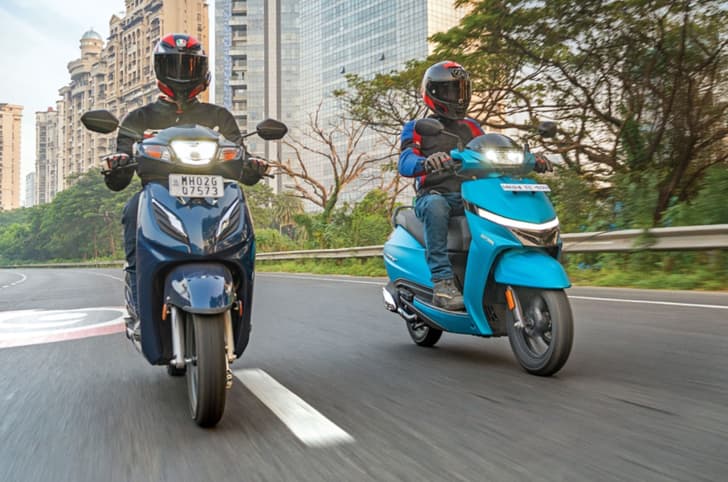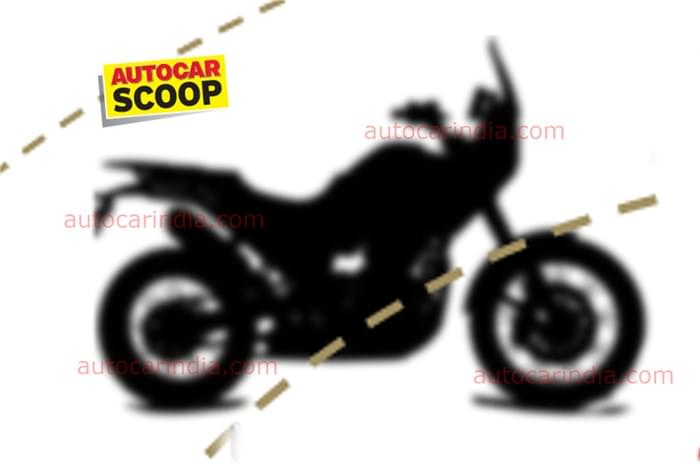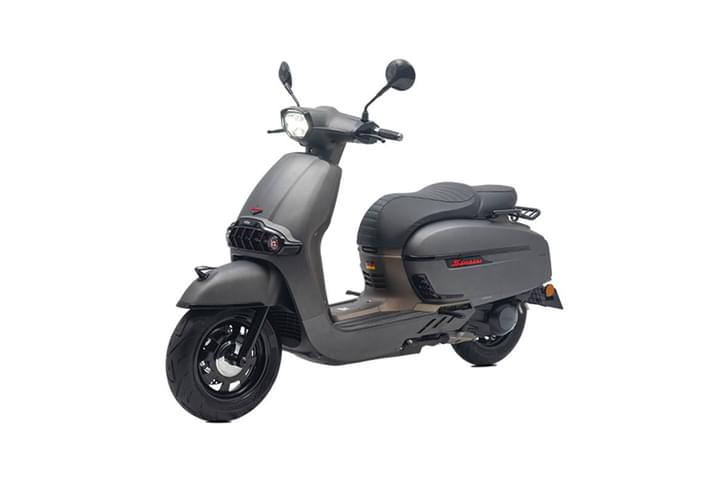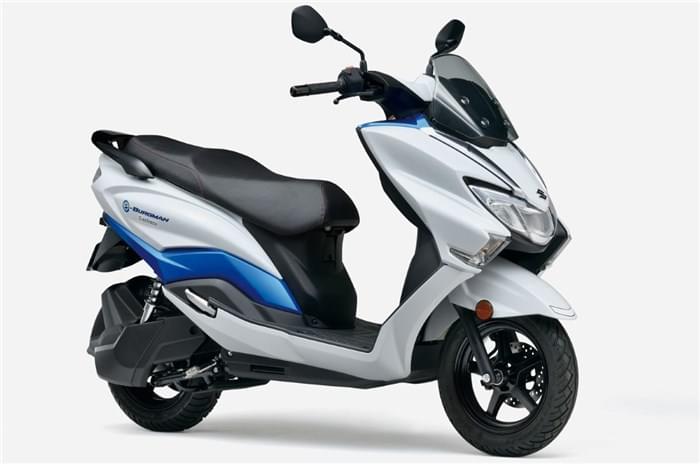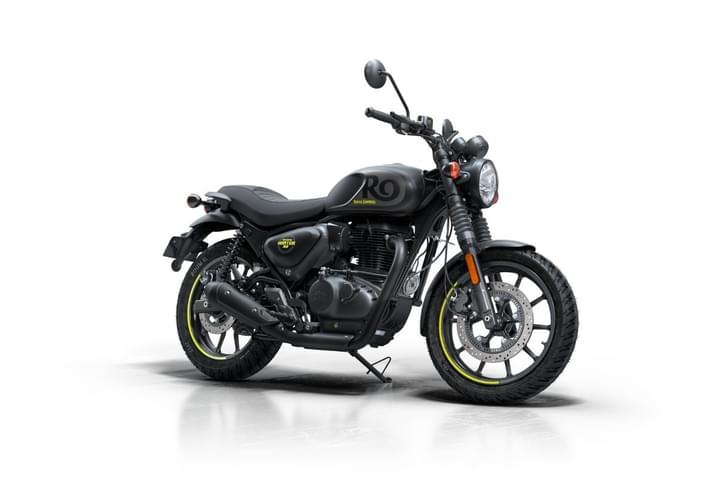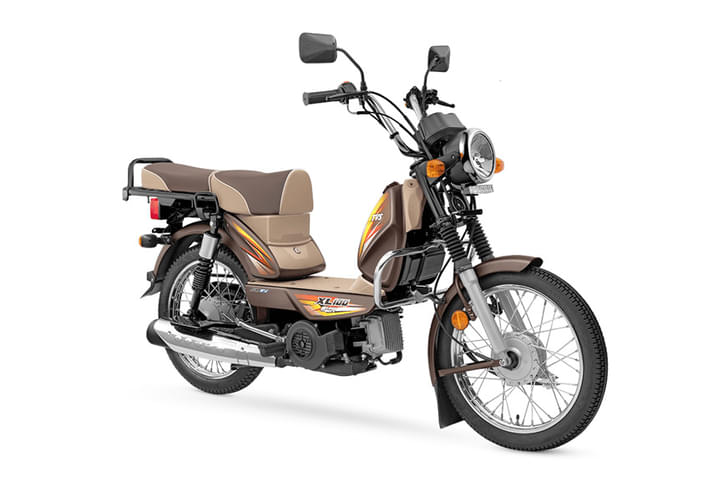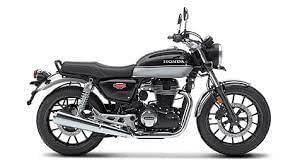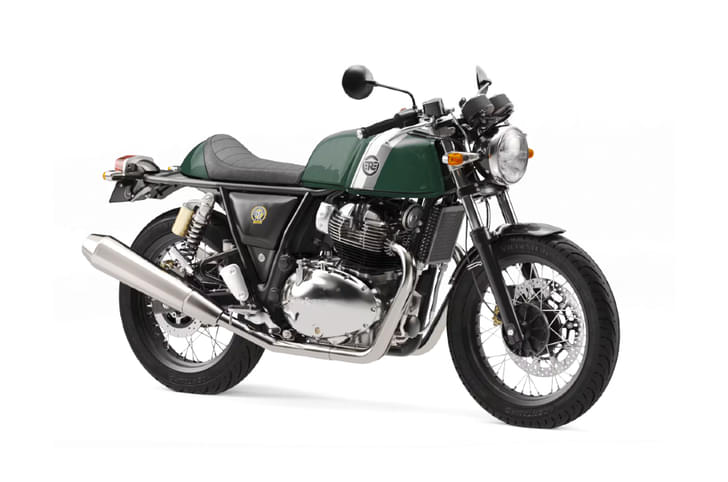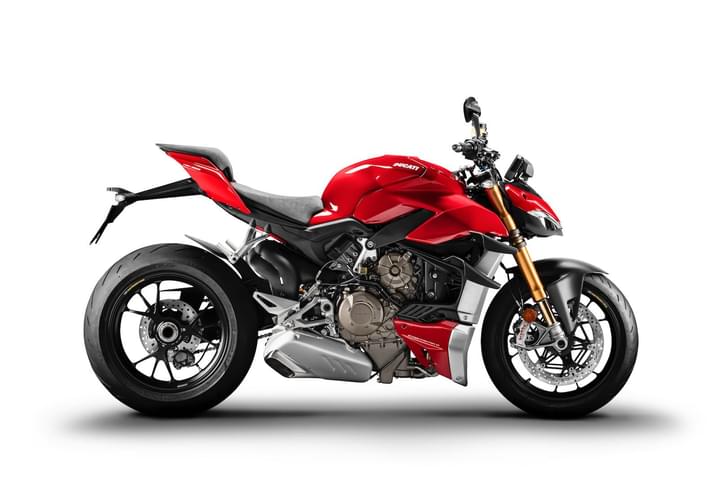If there is a motorcycle segment that deserves more credit in India, it’s the 160cc one. The bikes in this class must strike a balance between being no-nonsense commuters and performance-oriented machines. Not only must they give the average commuter a taste of performance, but equally provide budding enthusiasts a cost-efficient and fun option. Once bitten by the bug, it’s both these buyers, in most cases, that eventually move up the motorcycle ladder and contribute to India’s growing motorcycling scene.
The motorcycles in the segment we’ve decided to compare are not only amongst the best, but also successors to the bikes responsible for the creation of this segment in the early 2000s.
WHAT’S COOKING?
To begin with, our favourite since the last few years, the TVS Apache RTR 160 4V, has received a minor cosmetic makeover, which consists of a sharper looking LED headlight. Like the RTR 200, this headlight cluster does feature those eyebrow-like DRLs that look a bit too cartoonish, but nevertheless, the entire unit does help it look a bit more contemporary. TVS hasn’t changed any other body panels, but that’s probably because it doesn’t really need to. It’s got one of the sportiest designs in the segments and it has aged quite well. If there was anything to complain about, it is the large halogen-powered turn indicators and an exhaust muffler that some might find unappealing.
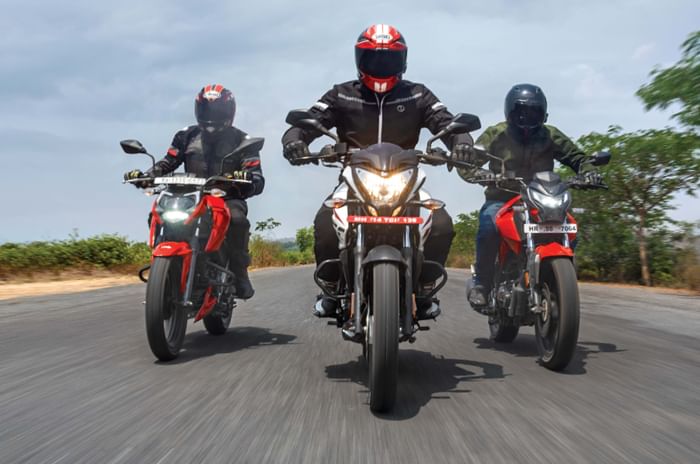
As for the Bajaj Pulsar NS160, the majority of its updates consist of new colour schemes. At first glance, it’s a lot to take in as the wheels and frame are now finished in matte white. While this works quite well with the white and grey as the secondary colour option, my eyes can’t agree when it comes to the red scheme. It’s not the easiest to keep clean, but the brightly coloured NS does manage to turn more heads than you would expect for a motorcycle in this segment. As for the design itself, it remains unchanged, but still has smooth flowing sport-naked lines. It’s also the only one with a split-seat setup, of the three bikes in this comparison. While it misses out on a LED headlight and indicators, its exhaust is neatly tucked away in its underbelly.
Moving on to the newest bike here, the Hero Xtreme 160R. Itmight not look the sportiest or the most substantial, but it’s by far the most modern looking. The large, single-piece side panel looks futuristic and similar to the design language seen on the Husqvarnas on sale in India. This, coupled with the modern LED headlight and tail-light unit, results in a bike that looks like it belongs a generation ahead of the other two. Another neat styling element is how sharply raked the tail is. While this has resulted in a pillion seat that’s smaller than the ones on the other two, it gives the 160R an unmatched overall design. The Hero also gets neat LED indicators, unlike the NS160 and the 160 4V.
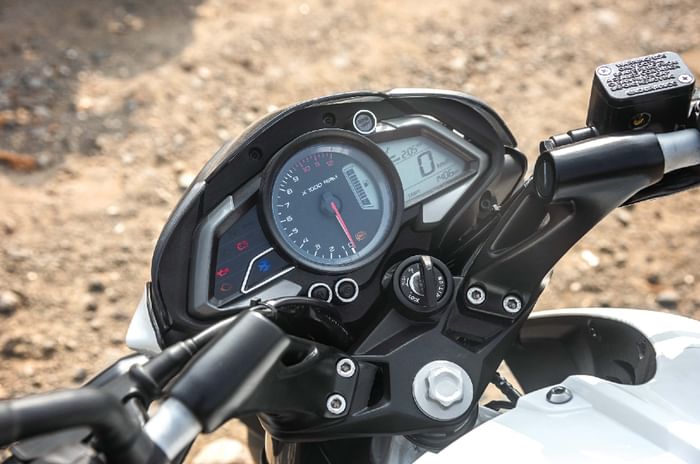
When it comes to other features, both, the Hero and the TVS, come equipped with full-LCD instrumentations. These displays don’t showcase more than the standard information, like the speed, tacho, fuel gauge and trip meters. Of the two, it’s the Hero’s display that we preferred, thanks to the bright negative LCD. The Bajaj, meanwhile, uses a digi-analogue setup that is equally informative, but looks a bit dated. However, there are many who will appreciate the large analogue tachometer. The Hero, on the hand, is the only one with a hazard light, while the Apache comes equipped with TVS’ Glide Through Technology, or GTT, making it a very easy motorcycle to ride in slow-moving traffic. The GTT, essentially, keeps the RPM a little higher than normal on a closed throttle and allows the bike to creep forward at low speeds (i.e in heavy traffic) to keep moving without the need of any throttle input. All three bikes come equipped with single-channel ABS as standard.
SMACKDOWN
While the Hero is the most futuristic when it comes to its design, the same can’t be said for its powertrain. The engine is an all-new 163cc, two-valve, single-cylinder unit that makes the lowest power and torque figures in this comparison, but not the lowestin the segment. Start it up and you’ll immediately notice how refined it is, with a fairly silent idle, accompanied by a mechanical note. Impressively, not much changes when the engine is under load as well. In fact, it feels quite smooth, all the way up to the redline, but it does sound a bit stressed at its limit.
It’s not close to the redline where you’ll enjoy this machine, because it has clearly been tuned for low and mid-range performance. The bike is good fun to ride within urban limits, with its tractable nature and a smooth shifting gearbox that’s paired to a light clutch. You get through the first three gears quite quickly, by the time you hit the taller fourth and fifth gears, the engine begins losing steam and overtaking on the highway isn’t as effortless as we would’ve liked. The power delivery at low speeds is peppy and the throttle response is crisp, but when ridden flat out, the performance just isn’t as strong as the other two.
| Performance & Fuel efficiency | |||
|---|---|---|---|
| Hero Xtreme 160R | Bajaj Pulsar NS160 | TVS Apache RTR 160 4V | |
| 0-60kph | 5.62s | 5.1s | 5.15s |
| 0-100kph | 20.76s | 16.12s | 15.93s |
| 20-50kph (2nd gear) | 3.90s | 3.49s | 3.36s |
| 30-70kph (3rd gear) | 8.13s | 6.94s | 6.61s |
| 50-80kph (4th gear) | 9.90s | 7.67s | 7.30s |
| 60-0kph | 17.70m | 17.11m | 16.58m |
| City (Fuel efficiency) | 44.1kpl | 39.58kpl | 43.24kpl |
| Highway (Fuel efficiency) | 52.3kpl | 47.70kpl | 50.76kpl |
Speaking of the other two, let’s begin with the NS160. Powering it is a 160.3cc, four-valve, single-cylinder engine. It has a 2hp advantage over the Hero and it’s noticeable even though the Bajaj weighs 11.5kg more. Unlike the Xtreme, this one doesn’t have as strong a mid-range, but responds with a stronger top end. This makes it a bit less effective in the city, but heaps better on the highway. The Bajaj also doesn’t lose steam as easily as the Hero once you cross the 70kph mark. To give you an idea of the difference, it’s more than 4sec faster to 100kph than the Hero, and this proves to be beneficial on the highway. That being said, it doesn’t feel as refined; we noticed constant vibrations through the handlebar and foot pegs at higher speeds.
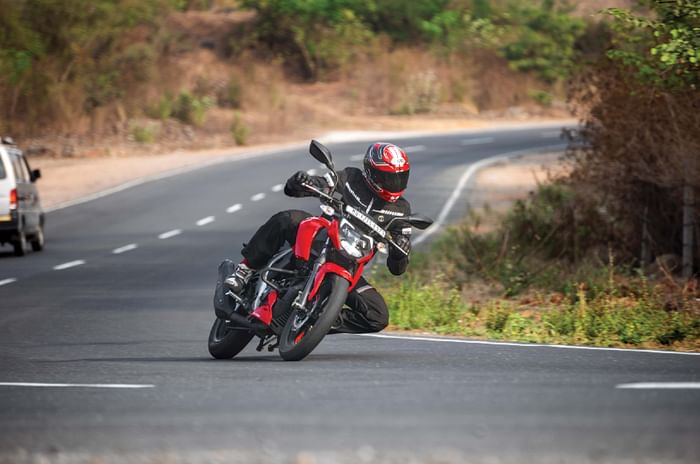
While on the subject of refinement, the TVS is as good, if not better, than the Hero. It’s only towards the very upper limit of the rev band that you can feel, and hear, vibrations from the foot pegs and the front end.
Where the Apache really shines though is when it comes to performance. TVS has managed to churn out an additional 1.61hp over the previous-gen variant, making it the most powerful engine in its class. Peak torque is impressive as well, with 14.73Nm produced at 7,250rpm, making the TVS one of the quickest bikes in its segment. The NS outpaces it to 60kph (by just 0.05sec), but it is the quickest motorcycle to 100kph, getting there in 15.93sec, compared with the NS’ 16.12sec. Not only does this make the Apache the bike of choice on the highway, but it’s also as punchy as the Hero in the city. These numbers, combined with a free-revving engine and a sweet exhaust note, give the Apache a clear edge in terms of its powertrain.
The TVS and Bajaj use air and oil-cooling, while the Hero makes do with only air-cooling. While all three bikes also have varying redlines, all three do 80kph at around 6,000rpm and 100kph at around 8,000rpm.
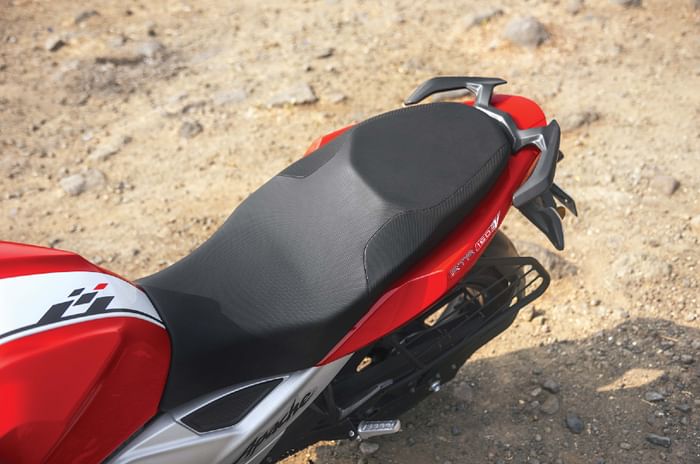
However, it’s not only performance that buyers of this segment are after and fuel efficiency plays a big role. Unsurprisingly, the Xtreme 160R, being the least powerful, is the most efficient, returning 44.1kpl in the city and 52.3kpl on the highway. The NS160, on the other hand, returns the lowest figures, at 39.5kpl in the city and 47.7kpl on the highway. The RTR 160 4V falls in between, which means that all three bikes are quite conservative when it comes to fuel consumption.
These figures are something you’d come to expect, given the kerb weight figures. The Hero Xtreme 160R is the lightest motorcycle, at 139.5kg. Following it is the TVS Apache RTR 160 4V at 147kg. The Bajaj Pulsar NS160, meanwhile, is the heaviest, at 151kg.
ROYAL RUMBLE
The weight also affects the way these bikes handle. The Hero’s low kerb weight and communicative chassis make it exciting, fun and flickable. It’s not just a quick turn-in that the 160R allows, but the dollops of mechanical grip will keep you confident even mid-corner. Its suspension strikes a good balance between handling and ride quality, giving the 160R an absorbent ride but without feeling too soft; and this doesn’t change much even with a pillion.
The RTR 160 4V has always been a capable and easy bike to ride fast. Despite offering a plush ride, the bike has a suspension setup that is quite adept at going around corners almost intuitively. The Remora tyres also do as good a job as the MRFs and almost never run out of grip on the road. The Apache has foot pegs that are positioned quite aggressively and you are positioned in a more committed riding position. While this does help in the twisties, many will prefer the more commuter-like ergonomics on the Hero. Another drawback to the Apache’s ergonomics is that if you’re over 5ft 10in, it does feel a little cramped over longer distances.
There’s no such issue on the Bajaj, the NS160, is quite a bit more spacious. It’s also the bike with the longest wheelbase in this comparison, and this becomes apparent as soon as you jump on the other two. It’s not as easy to throw into a corner, and we found that the bike doesn’t give you the same easy, yet instantly confident feel you get from the other two. That being said, it’s still agile enough and while it demands more from its rider, it will keep up with the other two on a winding road.
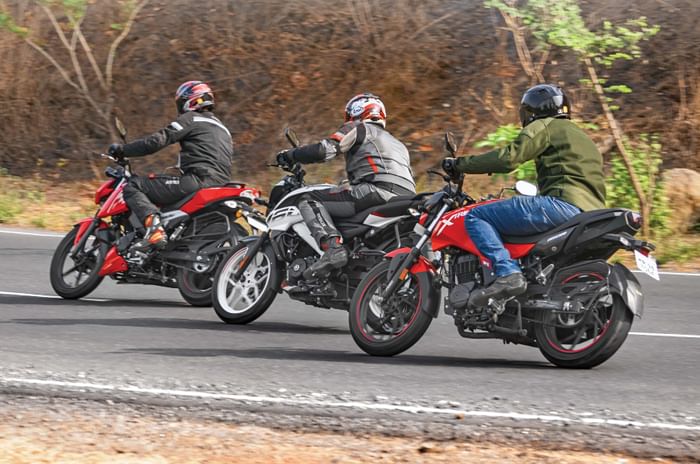
As for the ride quality, both, the Apache and Pulsar, are quite similar to the Hero in their setup, where they walk the line between comfort and handling. However, seats play a big role when it comes to comfort as well, and the Hero’s feel like it’s designed with short city journeys in mind. The seat is narrow and a bit too soft, leaving you sore over a distance of 100km, or more. The TVS and Bajaj, on the other hand, have a lot more room on offer and the stiffer padding works well over longer stints.
What the NS160 doesn’t manage to do too well is offer a good feel on the brakes. The braking is sharp, but the feedback from the lever isn’t as nice as on the other two. Ironically, despite posting the longest braking distance, it’s the Hero’s brakes that we feel are the most progressive. The Apache’s brakes aren’t as feedback rich as the Hero’s but with a stopping distance of 16.58m, they offered the best performance.
THE BOTTOM LINE
The 160cc segment is one of the most competitive ones in India and there are other players from Honda, Yamaha and Suzuki as well. Those bikes haven’t made it to this comparison because they’re either not as sporty as these three, or they’ve become unreasonably expensive in recent times.
Speaking of pricing, things are quite closely matched here. The rear disc brake equipped Hero Xtreme 160R is priced at Rs 1.10 lakh, while the TVS Apache RTR 160 4V and Bajaj Pulsar NS160 are priced at Rs 1.11 lakh (ex-showroom, Delhi). Meaning, it’s only a thousand rupees that separates the three.
| Specifications | |||
|---|---|---|---|
| Hero Xtreme 160R | Bajaj Pulsar NS160 | TVS Apache RTR 160 4V | |
| Price (ex-showroom, Delhi) | Rs 1.10 lakh | Rs 1.11 lakh | Rs 1.11 lakh |
| Engine layout | Single-cylinder, air-cooled | Single-cylinder, air- and oil-cooled | Single-cylinder, air- and oil-cooled |
| Displacement | 163cc | 160.3cc | 159.7cc |
| Power | 15.2hp at 8500rpm | 17.2hp at 9000rpm | 17.6hp at 9250rpm |
| Torque | 14Nm at 6500rpm | 14.6Nm at 7250rpm | 14.73 Nm at 7250rpm |
| Gearbox | 5-speed | 5-speed | 5-speed |
| Wheelbase | 1327mm | 1372mm | 1357mm |
| Ground clearance | 167mm | 177mm | 180mm |
| Fuel tank | 12 litres | 12 litres | 12 litres |
| Kerb weight | 139.5kg | 151kg | 147kg |
| Front suspension | Telescopic fork | Telescopic fork | Telescopic fork |
| Rear suspension | Monoshock | Monoshock | Monoshock |
| Front brake | 276mm disc | 260mm disc | 270mm disc |
| Rear brake | 220mm disc | 230mm disc | 200mm disc |
| Tyre size (f/r) | 100/80-17/130/70 -R17 | 90/90-17/120/80-17 | 90/90-17/130/70-17 |
The bikes are as closely matched as the pricing, which makes choosing between them quite tricky. To start off with the Pulsar NS160, it’s the least impressive in the city and the worst on efficiency. With its longer wheelbase, spacious ergos, stable dynamics and stronger top-end performance, this bike is more suited to highway riding. Despite being quite an old design, it continues to look fresh, especially in the new colour schemes, but to ride, the Pulsar doesn’t feel as fresh and promising as the other two.
Between them, the Hero is the better choice if your priorities weigh more towards commuter than sport. It’s fun to ride, looks good, has a decent features set and will be the cheapest to buy and run. For life within the city, it’s probably your best bet, but the Hero offers all this while making a fairly significant compromise in terms of overall performance.
And that brings us to the TVS. This bike is the best performer, it has the best features set and it also manages to remain a competent and relatively cost-effective city bike. It’s the overall balance that TVS has managed to strike with this motorcycle that retains it as our segment favourite.





